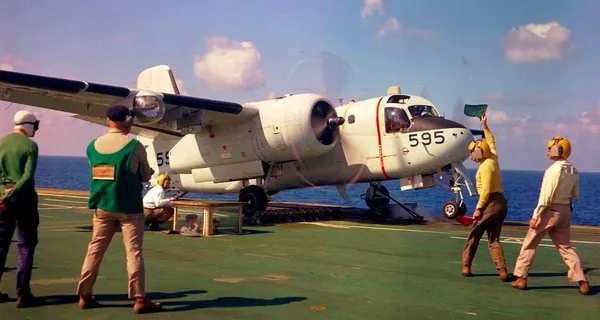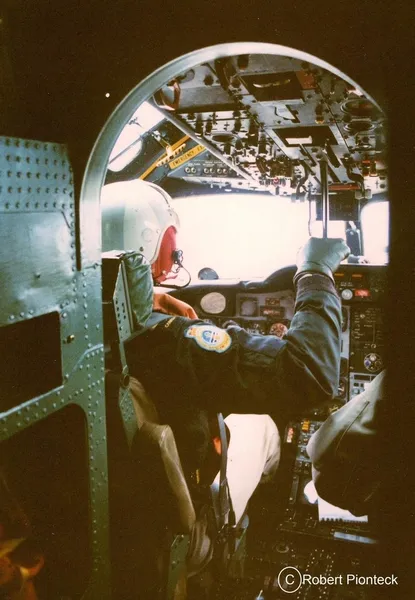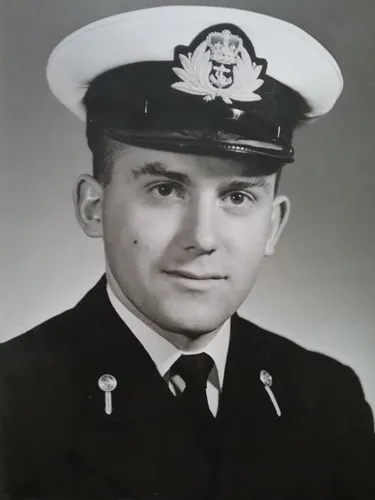McRadu, Murray George (Lieutenant)
Killed in Flying Accident 1968-February-02

Birth Date: 1943-March-27
Born: Vancouver, British Columbia
Parents: Son of George and Eva McRadu. Brother of Arnold and Grant McRadu.
Spouse:
Home: Saskatoon, Saskatchewan
Enlistment: Saskatoon, Saskatchewan
Enlistment Date: 1961-September-15
Service
RCN
Unit
VU 32 Sqn- Squadron (RCN)
Base
CFB Shearwater
Rank
Lieutenant
Position
Service Numbers
050877
Crew or Other Personnel
Tracker 1543
Mission
Tracker CS2F-1 1543
Ferry Flight 1968-February-02 to 1968-February-02
VU 32 () Sqn (RCN) CFB Shearwater
Tracker 1543
Three young pilots and a technician travelling on weekend trips designed to give young naval pilots more time at the controls. Departed from Shearwater NS to Downsview ON. Stayed overnight in St Hubert QC.
Departure airport: CFB St. Hubert, QC
Destination airport: CFB Downsview, ON
Narrative: While attempting to land at CFB Downsview in Toronto, developed engine trouble, crashed between two houses and burst into flames, killing all on board. With VU 32 when it crashed.
Tracker serial: 1543

de Havilland Canada (Grumman) CS2F Tracker, RCN (Serial No. 1595), preparing to launch from the deck of HMCS Bonaventure, 1969. Note how the nose wheel is off the deck and how the catapult cable hooks onto the fuselage. This aircraft survived its life at sea and went on to become Conair Turbo Firecat C-FKUF coded "577" in 1992. It was subsequently sold to Securite Civile of France as F-ZBCA coded "T-23"
The Grumman S-2 Tracker (S2F prior to 1962) was the first purpose-built, single airframe anti-submarine warfare (ASW) aircraft to enter service with the United States Navy. Designed and initially built by Grumman, the Tracker was of conventional design – propeller-driven with twin radial engines, a high wing that could be folded for storage on aircraft carriers, and tricycle undercarriage. The type was exported to a number of navies around the world. Introduced in 1952, the Tracker and its E-1 Tracer derivative saw service in the U.S. Navy until the mid-1970s, and its C-1 Trader derivative until the mid-1980s, with a few aircraft remaining in service with other air arms into the 21st century. Argentina and Brazil are the last countries to still use the Tracker.
The Tracker was intended as a replacement for the Grumman AF Guardian, which was the first purpose-built aircraft system for ASW, using two airframes for two versions, one with the detection gear, and the other with the weapon systems. The Tracker combined both functions in one aircraft. Grumman's design (model G-89) was for a large high-wing monoplane with twin Wright Cyclone R-1820 nine cylinder radial engines, a yoke type arrestor hook and a crew of four.
The S2F carried the nickname "Stoof" (S-two-F) throughout its military career.
The Tracker had an internal torpedo bay capable of carrying two lightweight aerial torpedoes or one nuclear depth charge. There were six underwing hard points for rocket pods and conventional depth charges or up to four additional torpedoes. A ventrally-mounted retractable radome for AN/APS-38 radar and a Magnetic Anomaly Detector (MAD) AN/ASQ-8 mounted on an extendable rear mounted boom were also fitted. Early model Trackers had an Electronic Support Measures (ESM) pod mounted dorsally just aft of the front seat overhead hatches and were also fitted with a smoke particle detector or "sniffer" for detecting exhaust particles from diesel-electric submarines running on snorkel. Later S-2s had the sniffer removed and had the ESM antennae moved to four rounded extensions on the wingtips. A 70-million-candlepower searchlight was mounted on the starboard wing. The engine nacelles carried JEZEBEL sonobuoys in the rear (16 in early marks, 32 in the S-2E/G). Early Trackers also carried 60 explosive charges, dispensed ventrally from the rear of the fuselage and used to create sound pulses for semi-active sonar (JULIE) with the AN/AQA-3 and later AQA-4 detection sets, whereas the introduction of active sonobuoys (pingers) and AN/AQA-7 with the S-2G conversion saw these removed. Smoke dispensers were mounted on the port ventral surface of the nacelles in groups of three each.

In 1954, de Havilland Canada (DHC) entered into a contract to build Trackers under license to replace the outmoded Grumman TBM-3E Avengers being used by the Royal Canadian Navy (RCN). 99 Trackers were built by DHC, with the first Canadian-built aircraft flying on 31 May 1956. From 1957 onwards, these aircraft operated from the newly deployed aircraft carrier HMCS Bonaventure and various shore bases. All the Canadian Trackers were built to the G-89 model design with a length of 42 feet (13 m). In 1960"“1961, 17 CS2F-1 aircraft, which had been relegated to training and utility duties by the CS2F-2, were transferred to the Royal Netherlands Navy. From 1964, 45 CS2F-2s were upgraded by fitting revised electronic equipment and sensors, becoming CS2F-3s. Also in 1964, a pair of CS2F-1 aircraft were stripped of armament and ASW electronics, converted to transports, and subsequently used for carrier onboard delivery. The CS2F-1, -2, and -3 were redesignated as the CP-121 Mk.1, Mk. 2, and Mk. 3 respectively following the unification of Canadian forces in 1968.
After Bonaventure was decommissioned in 1970, all remaining Canadian Trackers were transferred to shore bases. This limited their usefulness for ASW patrols, and between 1974 and 1981 gradually all but 20 were placed in storage and the remainder were stripped of their ASW gear. The remaining active-duty Trackers served until 1990 on fisheries protection and maritime patrol duties. A handful of Trackers were kept in flying condition until the late 1990s but were no longer used for active service.
DHC obtained a single U.S.-built S2F-1 for manufacturing verification; it was initially given RCN serial number 1500. In 1954, this aircraft was transferred to the RCN for operational testing, and was coded X-500. In 1956, it was upgraded to CS2F-1 standards and assigned serial number 1501, and was used as a stationary instructional airframe at Shearwater until 1972. Wikipedia (with revisions)



